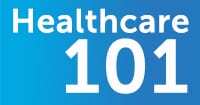Healthcare 101: How Can You Budget for Healthcare?
November 12, 2014

The Affordable Care Act requires all Americans to enroll in a healthcare plan – and open enrollment starts November 15, 2014. Whether you take advantage of an employer-sponsored health plan or purchase your own policy, carefully budgeting your medical costs can help keep you financially healthy.
But where do you start? After all, no one plans to get sick or be injured. The first step is to understand the types of medical expenses you might face and then plan accordingly.
Three Main Types of Medical Expenses
- Fixed monthly premiums are expenses you can count on. Your premium is the monthly payment you make to your insurance company for coverage. This is the easiest type of health expense to budget because it’s the same every month. According to WebMD, fixed insurance payments should make up about 4 to 6 percent of your monthly net income (after taxes).
- Routine out-of-pocket expenses can include prescription drugs you take on a regular basis, and fees for preventive care like vision and dental appointments. These expenses stay fairly constant from one year to the next if you keep a regular schedule with your preventative care and/or can predict a ballpark number for prescription costs. WebMD says these costs should be around 2 to 8 percent of your monthly net income.
- Unexpected costs are the most difficult ones to budget. Think sports injuries, auto accidents and emergency surgeries. Although you can’t predict these costs, you can certainly plan for them by setting aside money in order to be prepared.
Budget Your Healthcare Costs
Once you know the three types of medical expenses, you can determine how much to set aside for your annual health plan. Here are three simple steps:
- First, add your fixed premium payments and your routine out-of-pocket expenses. The total is your expected yearly health insurance cost.
- Next, figure out if you can set aside extra money to cover those hard-to-budget unexpected expenses. Every little bit helps!
- Consider a health savings account (HSA) or a flexible spending account (FSA) to help offset the cost of unexpected injuries and illnesses. Find the one that’s best for you.
HSAs and FSAs
Health savings accounts and flexible spending accounts are great health insurance budgeting tools because they allow you to set aside money that will be ready if and when you face a medical issue. While there are nuances between these two options, both allow employees to deposit a portion of their paycheck directly into a savings account. The funds can then be used specifically for healthcare costs, and in most cases, you don’t have to wait for an insurance company to approve or reimburse you for them.
Both HSAs and FSAs offer advantages such as tax benefits and reduced paperwork. However, differences between HSA’s and FSA’s are explored in this CareSpot Healthcare 101 article that may help you determine if an HSA or FSA might be right for you.
